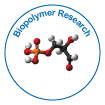Antibacterial Applications of Biodegradable Polymer Matrix Composites with Graphene-Related Materials: A Critical Analysis
Received Date: Dec 01, 2022 / Published Date: Dec 26, 2022
Abstract
For the first time, the development, processing methods, mechanical properties, and antibacterial activity of biodegradable polymer matrix composites containing graphene-related materials (GRMs) for antibacterial applications are discussed in this review. Chitosan is the most widely used biodegradable polymer for the production of antibacterial GRM-containing composites due to its suitable biological properties and processability. The majority of biodegradable polymers, such as those made from cellulose, gelatin, PVA, PCL, and PHA, have little to no antibacterial properties on their own; However, when combined with GRMs, they exhibit significant antibacterial activity (>70 percent). In vitro and in vivo examinations demonstrate that GRMs functionalization with biodegradable polymers likewise lessens potential GRM cytotoxicity.
Keywords: Biodegradable Polymer; Graphene; Antibacterial applications
Citation: Collins M (2022) Antibacterial Applications of Biodegradable Polymer Matrix Composites with Graphene-Related Materials: A Critical Analysis. Biopolymers Res 6: 132. Doi: 10.4172/bsh.1000132
Copyright: © 2022 Collins M. This is an open-access article distributed under the terms of the Creative Commons Attribution License, which permits unrestricted use, distribution, and reproduction in any medium, provided the original author and source are credited.
Share This Article
Recommended Journals
Open Access Journals
Article Tools
Article Usage
- Total views: 824
- [From(publication date): 0-2022 - Apr 04, 2025]
- Breakdown by view type
- HTML page views: 521
- PDF downloads: 303
